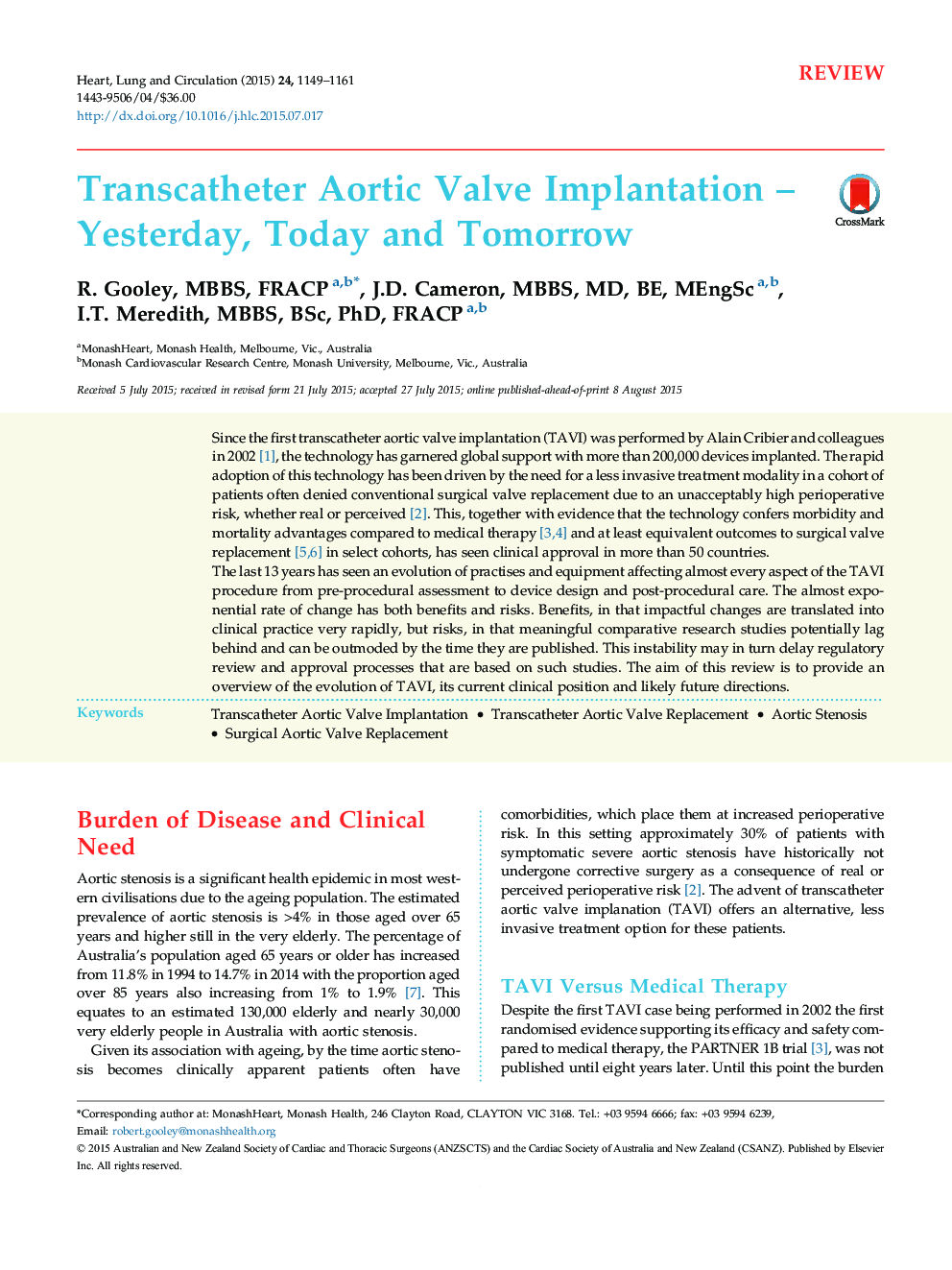| Article ID | Journal | Published Year | Pages | File Type |
|---|---|---|---|---|
| 5959009 | Heart, Lung and Circulation | 2015 | 13 Pages |
Since the first transcatheter aortic valve implantation (TAVI) was performed by Alain Cribier and colleagues in 2002 [1], the technology has garnered global support with more than 200,000 devices implanted. The rapid adoption of this technology has been driven by the need for a less invasive treatment modality in a cohort of patients often denied conventional surgical valve replacement due to an unacceptably high perioperative risk, whether real or perceived [2]. This, together with evidence that the technology confers morbidity and mortality advantages compared to medical therapy [3,4] and at least equivalent outcomes to surgical valve replacement [5,6] in select cohorts, has seen clinical approval in more than 50 countries.The last 13 years has seen an evolution of practises and equipment affecting almost every aspect of the TAVI procedure from pre-procedural assessment to device design and post-procedural care. The almost exponential rate of change has both benefits and risks. Benefits, in that impactful changes are translated into clinical practice very rapidly, but risks, in that meaningful comparative research studies potentially lag behind and can be outmoded by the time they are published. This instability may in turn delay regulatory review and approval processes that are based on such studies. The aim of this review is to provide an overview of the evolution of TAVI, its current clinical position and likely future directions.
